From castles to churches, bridges to mines, Speyside has a rich social and industrial history
which provides a wealth of new experiences for both visitors and locals.
Click on the title to open the web site and click on the location to open a Google map
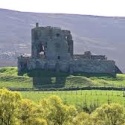
Built around 1480 by Thomas Cochrane, the Earl of Marr, a favourite of King James III. It is an L planned, four storey tower house set behind a rectangular curtain wall. It was passed to the Clan Ogilvy in 1489 and from them to the Clan Gordon in 1535. An extension is known to have been added in the 16th century by the Gordons before the Ogilvys reclaimed it in 1594, it having been burned down in 1592 by the Clan Mackintosh, in retaliation for the killing of the Bonnie Earl Of Moray. The castle itself was derelict by 1725. The stones from the castle have been used to build local houses and even Balvenie Castle in nearby Dufftown.
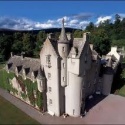
Ballindalloch dates from at least the 16th century. The main tower is plainly of this period. Moreover, the date 1546 is carved on a stone lintel in one of the bedrooms, providing a more precise date for the construction of the Castle. It was originally built in the traditional Z plan, but has been much altered and enlarged over the centuries. Ballindalloch Castle exemplifies the transition from the fortified tower house necessary in 16th century Scotland to the elegant and comfortable country house so beloved of the Victorians in the Highlands. One of the very few privately owned castles in Scotland to have been lived in continuously by its original family, the Macpherson-Grants.

Balvenie Castle was built in the 12th century by a branch of the powerful Comyn family (the Black Comyns) and extended and altered in the 15th and 16th centuries. The castle fell out of use in the early 14th century when the Comyns were reduced by Robert the Bruce. At some point in the 14th century the castle and the lordship of Balvenie passed into the earldom of Douglas. Nothing is documented as to how the Black Douglases first acquired the castle but the most likely account is that it came with the marriage of the heiress Joanna Murray to Archibald 'the Grim' , 3rd Earl of Douglas in 1362. The iron yett – the two-part iron cross-barred gate behind the main entrance is unique in Scotland. A rare example of 13th-century military architecture in Scotland is the formidable curtain wall.
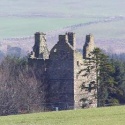
The castle is situated above the Pass of Livet, historically an important route between Banffshire and Aberdeenshire. It consists of a 4-storey, L-plan tower house built of whin and sandstone, random rubble in lime mortar with rough granite dressings. The walls are founded on large boulders just at ground level. The tower house is commonly believed to have been constructed by the Gordon family and served as hunting seat for the Earls of Huntly. A datestone set above the entrance bears the date 1586, the initials IG and HG and the family's coat-of-arms. However, it has been suggested that the castle was completed as early 1564 by a John Gordon. In 1647, the 2nd Marquess of Huntly was imprisoned here, in one of his own houses, before his trail and execution in Edinburgh in 1649.
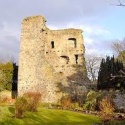
King Robert II granted the lands of Strathavon (including Drumin) to his son Alexander Stewart on the 17th July 1372. Alexander Stewart, referred to as the "Wolf of Badenoch" was noted for his temper and harsh justice. He is mostly remembered for the sacking and burning of Elgin Cathedral (1390) as part of a long term feud with the Bishop of Moray. It is unlikely that he was ever in permanent residence at Drumin, the castle being held by one of his sons. He also owned the strongholds of Lochindorb and Loch-an-Eilean and would more likely be resident there. It is thought that Sir Walter Stewart, the Wolf's Grandson, built the current castle in the late 1400's, replacing an earlier fortification. The same Sir Walter Stewart, however, disposed of the castle and lands pertaining to Drumin in 1490, when they passed to Alexander, 3rd Earl of Huntly.

Not much is known about the 13th century Rothes Castle. King William the Lion had introduced a family named De Pollock into the area around 1165 in an attempt to end lawlessness. Around 1200 he instructed Petrus De Pollock to build a castle at Rothays, De Pollock certainly chose his site well. The castle's location was such that it guarded an important highway of the early and middle ages. Through this same vale of Rothes came hordes of plundering Danes who were later to be routed by the Scots at the battle of Mortlach. All that remains today is a fragment of the curtain wall.
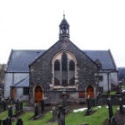
St Moulag, who was also patron of an ancient Celtic monastery in the area, founded Mortlach Church in 566 AD, one of the oldest Christian settlements in Scotland. It was also the site of a Scottish victory against the Danes in 1010 AD in the Battle of Mortlach. There is a legend that King Malcolm II extended the church three spears' lengths as a thanksgiving after defeating the Danes on the haugh below the church. The north wall with its postern door has a leper's squint and in the graveyard is the watch-house used to guard against body-snatchers. The church was rebuilt around 1200 AD.
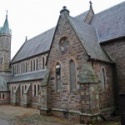
St Margaret's Church, Aberlour, was designed and built in 1875 by the Scots architect Alexander Ross to provide a chapel for the children and staff of the Aberlour Orphanage. The Orphanage was closed in 1967 and its buildings demolished. Only the clock tower and the church are left to remind thousands of 'mitherless bairns' of their childhood on Speyside. Well-worn encaustic tiles on the floor and initials carved in the original red-pine pews still bear witness to the children who came for daily services in the chapel. The church is now in the Diocese of Moray, Ross and Caithness, and its congregation belongs to the Episcopal Church of Scotland.
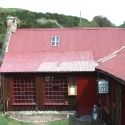
Knockando Woolmill is an A-listed group of buildings in the Spey Valley. The Woolmill itself contains original textile machinery acquired over the centuries. It has always been at the heart of the local community; listed as the 'Wauk Mill' in parish records from 1784, the mill has since maintained its traditions of spinning and weaving through generations of families. Spinning and weaving went hand in hand with agriculture at Knockando. There would be little work carried on in the Mill during sowing or harvest time but after shearing, local farmers would bring in their fleeces to be processed and take them away as blankets and tweed cloth.

The museum includes reconstructions of a farmhouse kitchen and of the old village smithy. There is also a display on peat cutting and the main exhibition area includes some fascinating material on local history and wildlife. Other current displays cover a wide variety of subjects, including a photographic exhibition with pictures of local flowering plants and animals, the Tomintoul area in times past and, of course, the local climate. The museum is open from April through to October, Monday to Saturday 10.00 a.m. - 5.00 p.m and Sunday 1.00 p.m. - 5.00 p.m during July & August. Admission to the museum is free.
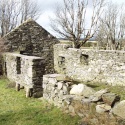
After the Reformation of 1560 the Catholic Church almost died out in Scotland. For a short time in the early 1600's there was not a single Catholic priest in the whole country, and for much of the century there were so few that the Mass was often little more than a memory even to those who had remained Catholic. For much of the 18th century, the college at Scalan in the Braes of Glenlivet was the only place in Scotland where young men were trained to be priests. From 1717 to 1799, over a hundred were trained despite numerous attacks by Hanoverian soldiers.

This picturesque structure spans the Livet at Bridgend where the river tumbles through a narrow rocky gorge. The exact age of the bridge is unknown but it is thought to have been built in connection with the nearby Blairfindy castle. Two arches of the bridge now survive, the third having been ripped away by flood waters during the great "Muckle Spate" of 1829 which caused much devastation to Speyside. There is an attractive picnic site and car park next to the bridge.

Built during construction of the military road through Avonside in 1754, this attractive bridge provided the main route across the crystal clear waters of the Avon for several centuries, until the demands of modern traffic and the rigours of the weather took its toll on the structure and it was replaced by a new bridge, just upstream, in 1991. The old bridge has now been renovated, providing an attractive picnic site and excellent vantage point for viewing this lovely river.

Discovered in the 1960's by a ploughman working his field, this stone lined underground chamber, now known as the Knock Earth House is of uncertain origin. It is thought that it may have originally been constructed as a 'earth house' or souterrain - an underground structure dating from the late Bronze Age (c 1200BC). It is more likely however that the site was built or adapted in the 18th century to house an illicit whisky still, and that this sma' still was disguised by a corn drying kiln constructed next to its entrance.
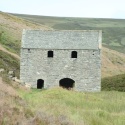
Between 1730 and 1737, iron was mined in the hills near the Well of Lecht. The ore was taken by pack horse over the hills to Nethy Bridge for smelting. Later, in 1841, the mine was re-opened by the Duke of Richmond as a Manganese Mine, local stories tell that the Minister of Corgarff had to lend his bull to help drag the heavy rollers over the Lecht Pass. At the peak of activity over 60 men and boys worked at the mine and it was, and still is, the largest manganese mine ever worked in Scotland.
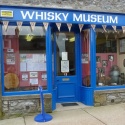
The Dufftown Whisky Museum provides a unique opportunity to discover the secrets of whisky making in days gone. It also gives a fascinating insight into the lives and times of whisky smugglers. Many of the exhibits were provided by local distillers as well as HM Custom and Excise. These include illicit stills as well as other tools and equipment used for whisky manufacture in times gone by. Open during the Summer Mon ~ Fri 13:00 - 16:00 also some mornings from 10:00 - 13:00
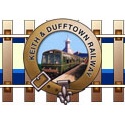
The Keith and Dufftown Railway is an eleven mile line linking the World's Malt Whisky Capital, Dufftown, to the market town of Keith. Along the way it passes through some spectacular scenery with glimpses of the varied wildlife to be seen along the route, including red squirrels, deer, buzzards and other large birds of prey. The track climbs through dense pine forests, passes the tranquil waters of Loch Park, winds through the valley of the River Isla and descends through rolling fields to it's destination, Keith.
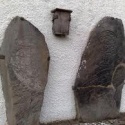
The four Inveravon Class I Incised Pictish Symbol stones, dating from perhaps the 6th-7th Century AD, were set against the south wall of Inveravon Church. The Church is a Category B Listed Building dating from 1806 but sitting on and near the remains of earlier Churches: the earliest existing record of St Peter's Church Inveravon dating back to 1108. The stones show carvings of Crescent and V-rod, three circles and a bar, a comb,and a mirror, another shows a decorated disc or a shield with an extension, an eagle, a mirror and a comb. The fourth stone show very weathered carvings of a Pictish beast and a crescent and v-rod.
Click HERE to open the leaflet for a full description of the stones.
Copyright © 2012 Speyside Forum - All Rights Reserved - Web Site by Bob Fuller Web Design
Email the Webmaster | Email the Forum |
Site Map
![]()